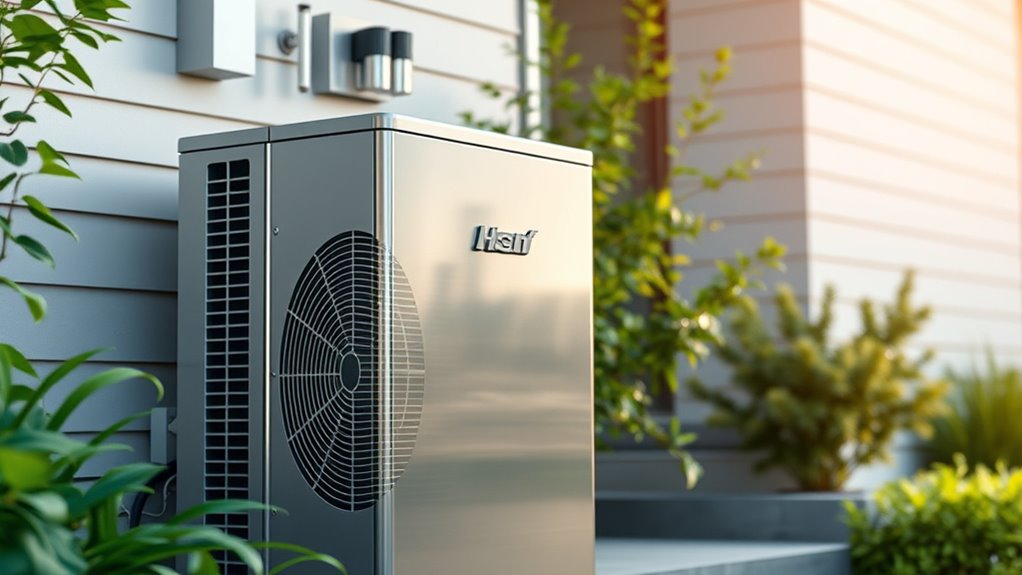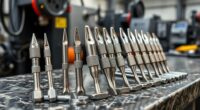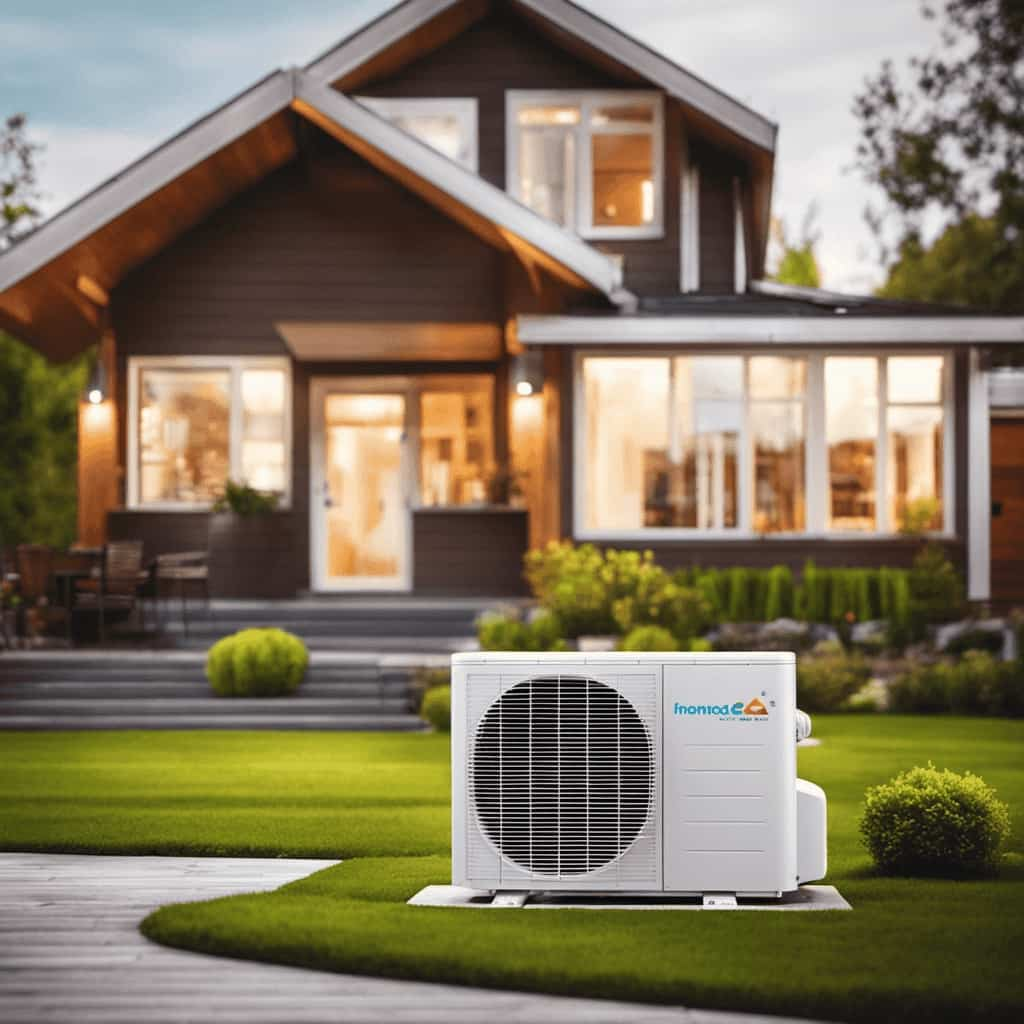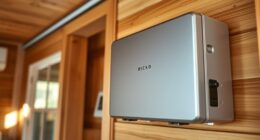A heat pump provides efficient year-round comfort by transferring heat between your home and outside air, warming in winter and cooling in summer. Modern models use inverter technology to adjust performance based on your needs, saving energy and maintaining steady temperatures. You can control your system with smart thermostats and connect remotely for added convenience. Keep exploring to find out how these systems can fit your home and lifestyle seamlessly.
Key Takeaways
- Heat pumps transfer heat between outside air and indoor spaces, providing both heating in winter and cooling in summer.
- Modern heat pumps utilize inverter technology to adjust performance efficiently for year-round comfort.
- Smart thermostats enable remote control and monitoring, optimizing system operation and energy savings throughout the year.
- Proper sizing and professional load calculations ensure the heat pump meets specific home heating and cooling needs.
- Advanced features like multi-zone options and air quality enhancements improve comfort and efficiency seasonally.
How Heat Pumps Work to Provide Dual Climate Control
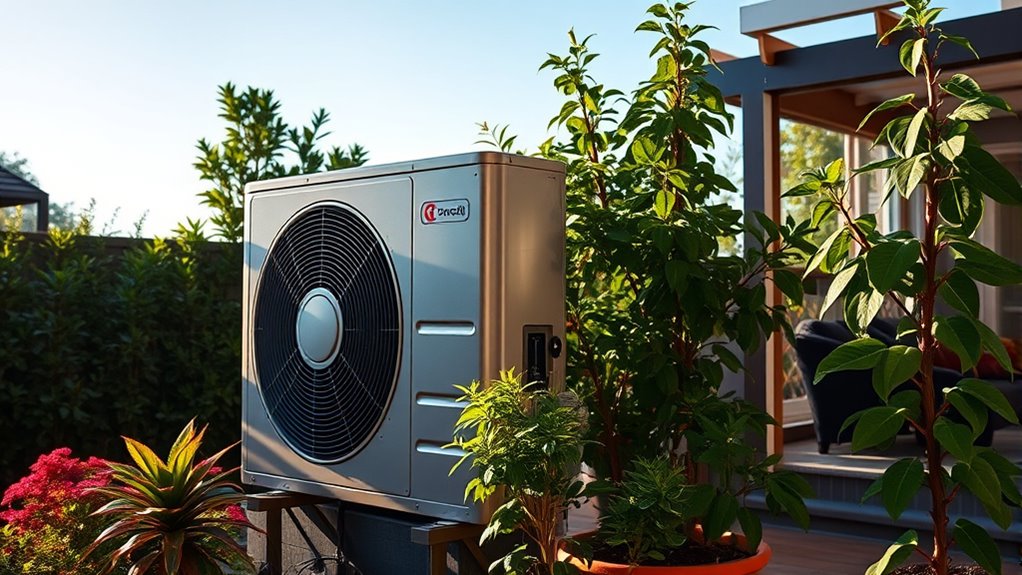
Heat pumps work by transferring heat between the outside air and your home, providing both heating and cooling through a refrigeration cycle. As a heat pump, it uses indoor and outdoor coils to move heat efficiently, even in temperatures as low as 0°F with modern models. During winter, it extracts heat from outside air and transfers it inside for warmth; in summer, it reverses this process to remove indoor heat and cool your home. Dual climate control is achieved by reversing the refrigeration cycle. Inverter technology adjusts the compressor’s speed in real-time for ideal energy efficiency and consistent temperature regulation. An air source heat pump offers a reliable, eco-friendly solution, seamlessly switching between heating and cooling modes to keep your home comfortable year-round. Additionally, modern models are designed to operate effectively in various weather conditions, including extreme temperatures, ensuring consistent performance throughout the year and maximizing energy efficiency. Incorporating advanced technology, these systems can optimize operation based on real-time conditions, further enhancing their reliability and performance. Recognizing the importance of professional help can also ensure proper installation and maintenance for optimal operation.
The Benefits of Modern Inverter Technology in Heat Pumps
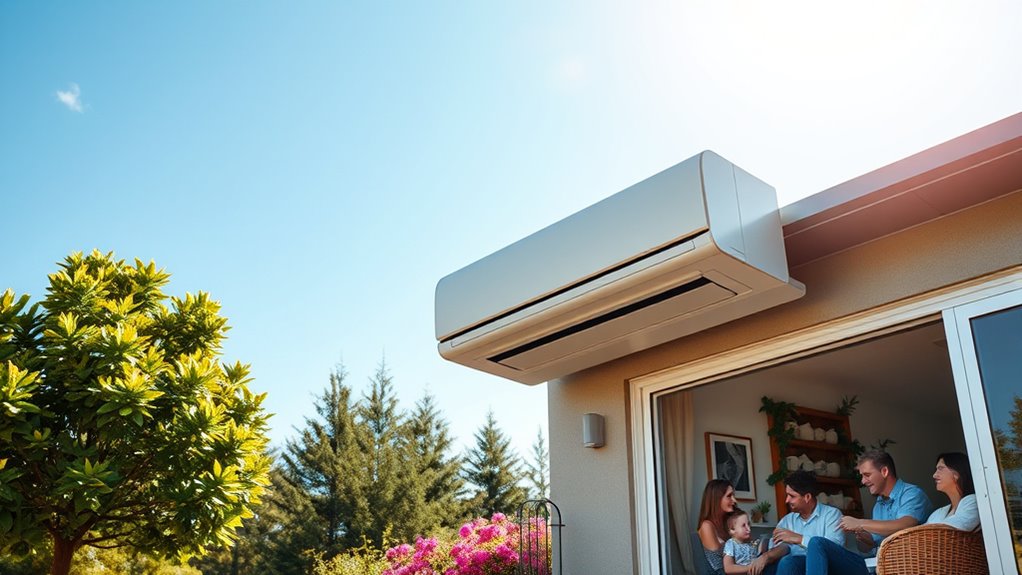
Modern inverter technology considerably enhances the performance of heat pumps by allowing the compressor to adjust its speed in real-time. This precise control improves energy efficiency by matching compressor output to your heating or cooling needs, leading to significant energy savings. With inverter technology, the compressor can modulate its speed smoothly, providing consistent indoor temperature without frequent cycling. This results in higher SEER ratings and better overall system performance. Additionally, variable refrigerant flow enables the system to adapt effectively to outdoor temperature changes, even in cold climates. The quieter operation and reduced cycling extend the component lifespan, making your heat pump more durable. Furthermore, understanding cost and budgeting factors can help you choose the most efficient and cost-effective system for your needs. Considering indoor air quality features can further enhance your comfort and health. Incorporating regulation standards ensures your system operates within eco-friendly and noise pollution guidelines, promoting sustainable living. Staying informed about regional climate conditions can also optimize your heat pump’s performance in your specific area. Overall, inverter technology offers superior efficiency, comfort, and longevity for year-round climate control.
Key Features and Options for Whole Home Heating and Cooling Systems

Advancements in heat pump technology now offer a range of features and options designed to maximize comfort and efficiency throughout your home. A heat pump system provides reliable year-round comfort by seamlessly switching between cooling and heating modes. Modern HVAC systems include indoor air handlers with variable-speed motors and outdoor units with inverter compressors that adjust their operating speed for superior energy efficiency. Advanced coils, like Daikin’s 7mm All-Aluminum Evaporator Coil, boost heat transfer and durability. Many systems also feature smart thermostats with remote connectivity, diagnostics, and scheduling to enhance control. Optional enhancements such as air cleaners and advanced defrost modes improve indoor air quality and system performance, ensuring your home stays comfortable, efficient, and healthy across all seasons. Additionally, understanding the safety features of associated components like electric heated mattress pads can contribute to overall home safety and peace of mind. Incorporating energy-efficient components can further reduce operating costs and minimize environmental impact. Using advanced filtration systems can also help maintain healthier indoor air quality, complementing the overall functionality of your heating and cooling setup. For example, crochet styles for locs can be integrated into home decor or personal accessories, showcasing versatility beyond traditional uses. Moreover, the integration of sound design principles in HVAC equipment can lead to quieter operation and enhanced comfort within living spaces.
Controlling Your Heat Pump With Smart Thermostats and Cloud Connectivity
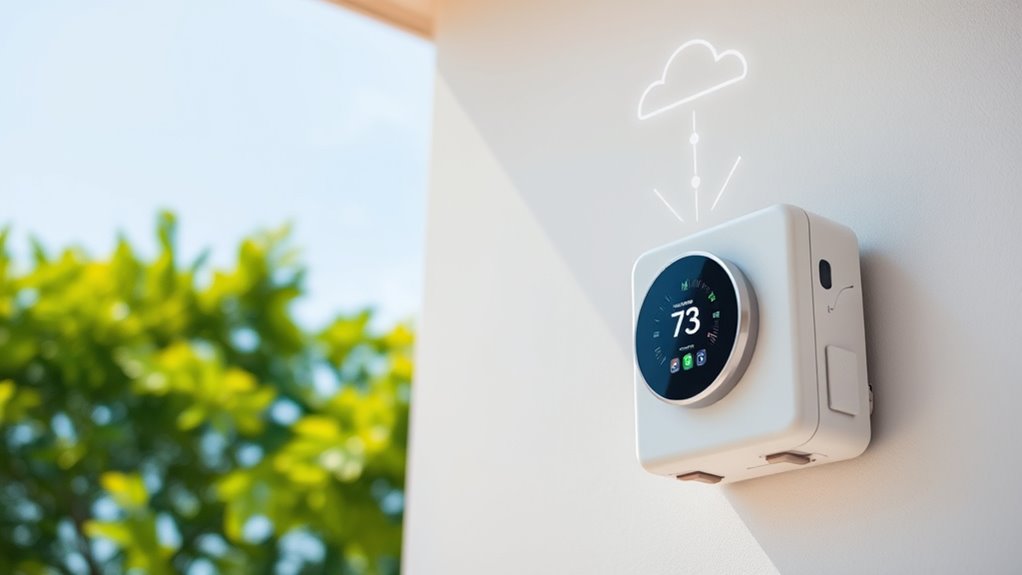
Controlling your heat pump has never been easier thanks to smart thermostats with cloud connectivity. With these devices, you can remotely monitor and adjust your system anytime through smartphone apps or web portals, guaranteeing ideal temperature regulation. Smart thermostats like Daikin One+ and One Touch enable precise system performance management and help improve energy efficiency by scheduling and fine-tuning settings. Their cloud connectivity provides diagnostic alerts and real-time data, allowing you to detect issues early and optimize system operation for year-round comfort. Two-way communication between the thermostat and heat pump ensures quick responses to temperature changes, enhancing system performance. Additionally, understanding Kia Tuning options can help optimize your heat pump system for better efficiency and comfort. These innovations also facilitate system modification to adapt to changing needs and ensure consistent climate control. Overall, these advanced controls simplify system monitoring, support proactive maintenance, and maximize comfort regardless of the season.
Choosing the Right Heat Pump System for Your Home’s Needs

Choosing the right heat pump system starts with understanding your home’s specific heating and cooling needs. Accurate heat pump sizing depends on factors like square footage, insulation, climate, and system capacity. An HVAC professional can perform a load calculation to determine the ideal size, avoiding issues with oversized or undersized units that affect efficiency and comfort. Proper sizing ensures energy efficiency, comfort optimization, and reliable performance year-round. Additionally, considering system efficiency standards can help in selecting units that maximize energy savings. Consider features like inverter technology and multi-zone systems to enhance control and reduce energy costs. Evaluate your home insulation to determine if a single-zone or multi-zone system suits your needs best. Additionally, understanding the principles of heat transfer can help in selecting systems with better thermal performance.
Frequently Asked Questions
Can a Heat Pump Be Used for Both Heating and Cooling?
Yes, a heat pump can be used for both heating and cooling. It works by transferring heat from one place to another, so in winter, it draws heat into your home, and in summer, it removes heat from inside. With inverter technology, it adjusts quickly to your needs, making it a versatile system that keeps your home comfortable all year round.
How Much Is a Heat Pump for a 2000 Square Foot House?
You’re wondering about the cost of a heat pump for your 2,000-square-foot home. Typically, it costs between $4,000 and $8,000, including installation. Factors like efficiency, brand, and added features can push the price higher. Keep in mind, you might need ductwork upgrades or modifications. To make it more affordable, explore financing options and rebates, which can help offset the initial investment.
Is a 2 Stage Heat Pump Worth the Extra Money?
Thinking a 2-stage heat pump isn’t worth the extra cash? Think again. You get more consistent comfort, better dehumidification, and up to 20% energy savings—who wouldn’t want that? Sure, it costs more upfront, but if you value long-term savings and reliable climate control, it’s a smart investment. Skip it, and you might end up paying more in energy bills and discomfort down the road.
What Is the Main Disadvantage of a Heat Pump?
The main disadvantage of a heat pump is that it becomes less efficient in very cold climates. When temperatures drop below freezing, you may notice reduced heating capacity, and the system works harder, increasing energy use. Cold weather can also trigger defrost cycles, which temporarily lower efficiency and generate noise. Because of this, heat pumps might struggle to keep your home warm in extreme winter conditions, sometimes requiring additional heating sources.
Conclusion
So, now that you know heat pumps can keep your home comfy year-round, you might wonder why everyone’s still stuck with traditional systems. Maybe it’s because switching is just too easy and cost-effective! Embrace the future of climate control—save energy, money, and your sanity—by choosing a modern heat pump. After all, who wouldn’t want a single system that keeps you warm in winter AND cool in summer, all while making your neighbors jealous?
